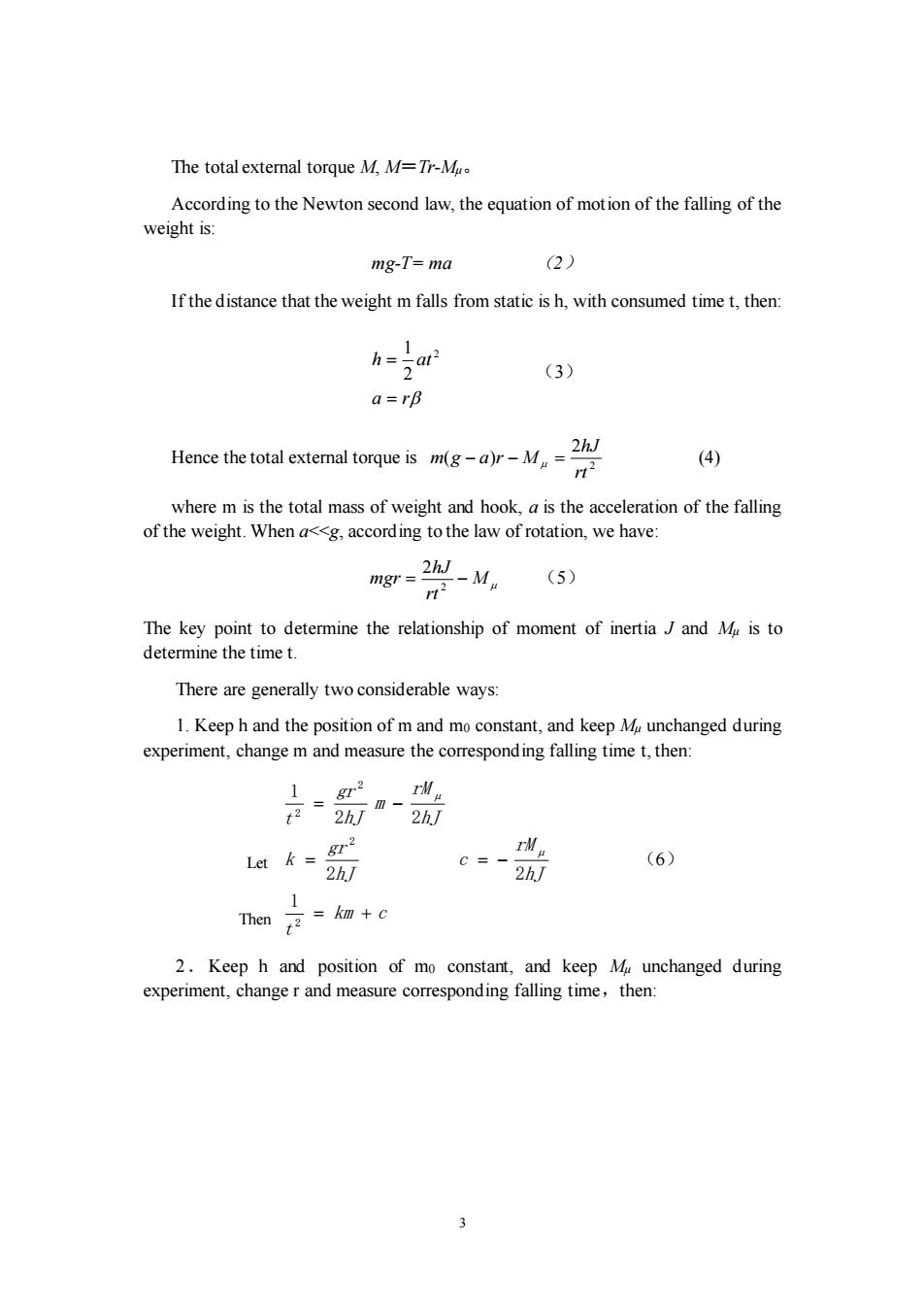正在加载图片...

The total external torque M,M=Tr-M According to the Newton second law,the equation of motion of the falling of the weight is: mg-T=ma (2) If the distance that the weight m falls from static is h,with consumed time t,then: h=Lat 2 (3) a=rB Hence the total extemal torque ism(gM (4) where m is the total mass of weight and hook,a is the acceleration of the falling of the weight.When a<<g,according to the law of rotation,we have: mgr 2hJ-M (5) 112 The key point to determine the relationship of moment of inertiaJ and M is to determine the time t. There are generally two considerable ways: 1.Keep h and the position of m and mo constant,and keep M unchanged during experiment,change m and measure the correspond ing falling time t,then: 1。gr2mM =2hm- 2hJ Lt本sr C=- (6) h/ 2h/ 1 Thcn京=k+c 2.Keep h and position of mo constant,and keep M unchanged during experiment,change r and measure corresponding falling time,then:3 The total external torque M, M=Tr-Mμ。 According to the Newton second law, the equation of motion of the falling of the weight is: mg-T= ma (2) If the distance that the weight m falls from static is h, with consumed time t, then: a r h at = = 2 2 1 (3) Hence the total external torque is 2 2 ( ) rt hJ m g − a r − M = (4) where m is the total mass of weight and hook, a is the acceleration of the falling of the weight. When a<<g, according to the law of rotation, we have: M rt hJ mgr = − 2 2 (5) The key point to determine the relationship of moment of inertia J and Mμ is to determine the time t. There are generally two considerable ways: 1. Keep h and the position of m and m0 constant, and keep Mμ unchanged during experiment, change m and measure the corresponding falling time t, then: km c t hJ rM c hJ gr k hJ rM m hJ gr t = + = = − = − 2 2 2 2 1 2 2 2 2 1 (6) 2.Keep h and position of m0 constant, and keep Mμ unchanged during experiment, change r and measure corresponding falling time,then: Let Then